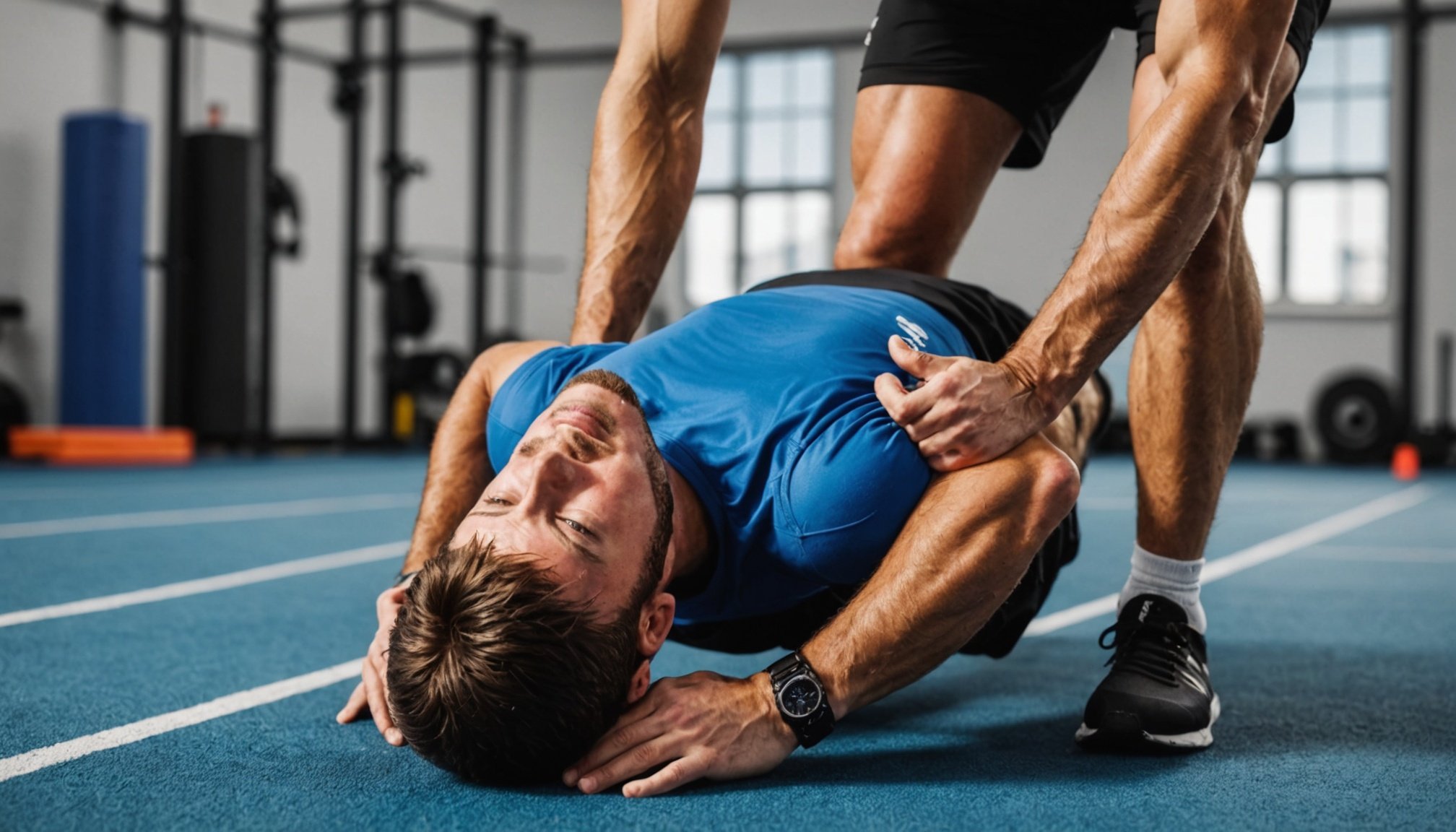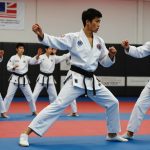Overview of Chronic Injuries in Elite Athletes
In the realm of chronic injuries, elite athletes face unique challenges due to the high demands of their sports. Common types of chronic injuries include tendonitis, stress fractures, and ligament tears. These injuries often develop gradually, resulting from repetitive stress and strain on specific body parts over time.
The impact of chronic injuries on an athlete’s performance is substantial. Not only can they decrease mobility and flexibility, but they also prolong recovery times, making it difficult for athletes to return to peak performance swiftly. The repercussions extend beyond physical constraints, affecting an athlete’s confidence and mental state.
This might interest you : Empowering local connection: innovative outreach strategies to enhance participation in uk sports clubs
Recognising the importance of early diagnosis and intervention, sports therapy plays a crucial role in managing these injuries. By identifying them in their nascent stages, practitioners can implement tailored sports therapy protocols, reducing the risk of further damage. Early intervention can range from modified training regimens to therapeutic exercises designed to strengthen vulnerable areas.
Moreover, involving a multidisciplinary team of healthcare professionals ensures a 360-degree approach to rehabilitation, enhancing the recovery process. This teamwork is pivotal in enabling athletes to achieve optimal recovery and maintain continuity in their sports careers, thereby emphasising the value of swift action in addressing chronic injuries.
Additional reading : Empowering inclusion: innovative approaches for uk sports clubs to champion athletes with disabilities
Evidence-Based Techniques for Injury Rehabilitation
Navigating the path to recovery, injury rehabilitation utilises evidence-based techniques to ensure athletes can return to their sport with confidence. One commonly employed method is the application of RICE (Rest, Ice, Compression, Elevation), effective in the initial phase for reducing swelling. Sports therapy integrates this with progressive loading, where controlled stress is gradually applied to encourage the healing of tissues while preventing further damage.
Incorporating innovative sports therapy methods, Functional Movement Screening (FMS) has gained traction. This assessment highlights dysfunctional movement patterns, allowing therapists to tailor exercises enhancing stability and mobility, reducing the risk of re-injury. Moreover, proprioceptive training, which improves an athlete’s body awareness, further supports functional recovery.
Recent research underscores the efficacy of combining rehabilitation with technology, such as anti-gravity treadmills, which facilitate exercise with reduced impact on injured areas. Evidence-based techniques ensure that each stage, from initial immobilisation to dynamic movements, is supported by data-driven strategies, minimising recovery time.
By highlighting case studies of successful rehabilitation, sports therapy demonstrates tangible outcomes. Notably, elite athletes like Andy Murray have benefitted from these protocols, showcasing a full return to tennis following significant injury challenges, emphasising the importance of precision in injury rehabilitation.
Practical Strategies for Managing Chronic Injuries
Navigating chronic injury management involves crafting tailored treatment plans that cater to each elite athlete’s needs. These plans often incorporate physical therapy, addressing unique requirements with precision. The use of advanced therapeutic protocols helps maintain athlete-specific recovery targets, fostering optimal healing environments for injured tissues.
Physical therapy plays a fundamental role, featuring exercises that enhance mobility and strength while preventing further injury. Rehabilitation exercises are crucial, guiding athletes through structured regimens that gradually build resilience and reduce susceptibility to recurring injuries. These exercises are meticulously designed to align with an athlete’s sport-specific requirements.
Incorporating technology and innovative equipment into recovery processes marks a significant advancement. Devices like anti-gravity treadmills and resistance pools provide low-impact training options, allowing physical exertion without the risk of aggravating injuries. These innovations support the management of chronic injuries by offering versatile and efficient recovery pathways.
Collaborative efforts between therapists and athletes ensure that therapy protocols are dynamically adjusted. Continuous evaluation and feedback loops allow therapies to evolve, perfectly aligning with athletes’ progress and emerging needs. Managing chronic injuries with these practical strategies highlights the intersection of technology, tailored care, and athletic dedication in effective recovery campaigns.
Prevention of Injury Recurrences
Preventing injury recurrences in elite athletes is essential for maintaining peak sports performance. A vital strategy involves engaging in regular strength training and conditioning. By enhancing muscle strength and flexibility, athletes can better support their bodies and reduce the risk of chronic injuries. Specific programmes target varying muscle groups, ensuring comprehensive development necessary for an athlete’s sport.
Equally important are psychological factors which play a significant role in injury prevention. Maintaining a positive athlete mindset can dramatically influence recovery and resilience. Sports psychologists often integrate mindset training, which encourages athletes to stay focused and manage stress effectively, thereby preventing the likelihood of injury recurrences.
Moreover, best practices include adopting dynamic warm-ups and cool-down routines before and after activities. These routines increase blood flow and prepare muscle tissues for activity, reducing the chance of strain. Encouraging athletes to listen to their bodies and recognise early signs of fatigue helps in adapting training intensity accordingly.
Lastly, incorporating cross-training can refresh mental and physical states, decreasing monotony and overuse injuries. By considering all these factors, elite athletes can achieve sustained performance and significantly decrease recurrence risks, reinforcing athletic longevity.
Successful Outcomes and Real-World Applications
In the realm of sports therapy, documented success stories highlight impactful applications. UK sports therapists have shared inspiring tales of elite athletes who have triumphed over substantial chronic injuries. Through a combination of tailored sports therapy techniques and dedicated teamwork, these athletes have made remarkable recoveries.
One notable case involves a prominent football player who suffered from severe tendonitis. After enduring a challenging season, a customised therapy plan involving innovative technologies like anti-gravity treadmills was employed. This strategy emphasised low-impact exercises, allowing the player to rebuild strength without exacerbating the injury. The case concluded successfully, with the athlete returning to the field and achieving impressive performance levels.
Longitudinal studies underscore the importance of integrated approaches in athlete recovery. Regular evaluations reveal that collaborative efforts between athletes, therapists, and coaches refine therapy protocols, resulting in optimal outcomes. These studies demonstrate that persistent communication and adaptation of strategies are crucial for sustained recovery.
Overall, real-world applications of these therapies have shown how strategically implemented methods can transform potential setbacks into successful returns to peak athletic performance. By learning from these examples, sports therapists continually evolve their approaches, ensuring they remain at the forefront of effective injury rehabilitation.
Latest Trends in Sports Therapy
In the ever-evolving world of sports therapy, new trends are reshaping how we approach athletic performance. Emerging techniques and technologies play a pivotal role, offering innovative solutions to traditional problems. A prime example is the use of wearable tech, which provides real-time performance data. This allows for immediate adjustments and minimizes the risk of aggravating existing injuries.
Nutrition and recovery methods have also taken center stage. Tailored meal plans and recovery protocols can significantly enhance performance and reduce injury risk. Incorporating these elements into sports therapy trends ensures athletes maintain peak physical condition while promoting faster recovery.
Additionally, integrated recovery systems combining traditional methods with modern approaches have shown great promise. For instance, cryotherapy chambers and infrared saunas are increasingly used to speed recovery while reducing inflammation.
Recent case examples highlight the success of these trend implementations. Notably, elite athletes who have adopted these methodologies report significant improvements in performance metrics and injury resilience. These trends underscore a paradigm shift, where innovation fuels athletic empowerment and longevity. By staying informed on these developments, athletes and therapists can explore new opportunities to enhance sports performance and well-being.











